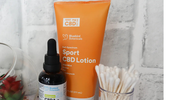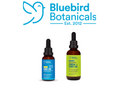The Language of CBD: Decoding Marketing Terms Without the Jargon
If you've ever picked up a CBD product and felt lost in a sea of jargon, you're not alone. With terms like "full-spectrum" and "bioavailability" thrown around, it can be tough to know what they really mean. This article aims to break down the confusing language of CBD, helping you understand what CBD is and how to navigate the marketing buzzwords that often cloud the truth. Let's clear the air and make sense of it all, so you can make informed choices for your wellness journey.
Key Takeaways
-
Understanding CBD terminology to help you make informed choices.
-
Common buzzwords like "entourage effect" and "bioavailability" have specific meanings that impact product effectiveness.
-
Always look for third-party lab results.
-
Check ingredient sourcing and COAs for clarity.
-
Question marketing claims and seek information about the products you choose.
Introduction – Why CBD terminology can be confusing
The CBD industry gained popularity almost overnight. As a result, many marketing departments leaned into buzzwords that sound scientific but are rarely explained. This has led to a Wild West of CBD language where consumers are left asking the same basic question over and over again: What is CBD, and what am I really buying? Understanding CBD product labels isn't just about satisfying curiosity; it's the key to a more informed experience.
CBD terms are not always straightforward, and sometimes, they can even be misleading. That's why having CBD terms explained clearly through a reliable CBD terminology guide can make all the difference when choosing the right product.
Regulators are making things even more chaotic. One country might need “full-spectrum hemp extract” on labels, while another might completely prohibit the term. Companies face the possibility of misleading authorities or consumers without uniform glossaries. For example, “CBD oil” and “hemp extract” normally indicate the same thing, but if translations vary, they could unintentionally seem different. That's why a cbd terminology guide is so important.
Common Marketing Buzzwords: What They Really Mean
Below, we’ve gathered some of the most common phrases you’ll see on product labels so consider this your CBD terminology guide to help make sense of what brands are really saying.
“Entourage Effect”
The entourage effect is a popular term in the CBD world that suggests CBD works better when combined with other compounds found in the cannabis plant, like terpenes and other cannabinoids. It's why some people prefer full-spectrum products, believing they get more benefit from the synergistic interaction of all the compounds.
“Full-spectrum”
Full-spectrum CBD means the product contains all the cannabinoids, terpenes, and other compounds naturally found in the hemp plant. This includes trace amounts of THC (less than 0.3% by law). The idea is that these compounds work together to produce a more potent effect than CBD alone, thanks to the entourage effect. If you are looking for high-quality CBD products, full-spectrum might be a good choice.
“Bioavailability”
This is how much of a substance your body can actually absorb and use. For example, oral CBD oil may have a bioavailability of 10–20%, meaning most of it is lost in digestion. Not all CBD is created equal when it comes to bioavailability. Factors like how you take CBD (e.g., orally, sublingually, topically) and the formulation of the product can significantly impact how much CBD your body absorbs. For example, CBD taken orally often has lower bioavailability because it has to go through the digestive system. Brands often use techniques like nano-emulsification to try and increase bioavailability. Understanding CBD oil labels can help you assess the potential bioavailability of a product.
“Nano-emulsified”
Nano-emulsification is a process that breaks down CBD into tiny particles. The goal? To increase its bioavailability. This is especially relevant for products like edibles or topicals, where absorption can be a challenge. If you're considering CBD topicals, keep an eye out for nano-emulsified options, as they might offer better results. Always do your research, read labels carefully, and look for third-party lab testing to verify the quality and contents of any CBD product you're considering.
What It Doesn’t Mean
Avoiding confusion with unverified health claims
It's important to know what CBD isn't. CBD is not a cure-all. While research is ongoing and promising, it's not yet approved to treat, cure, or prevent any disease. Be wary of any brand making such claims. For example, saying a CBD product can eliminate anxiety or cure cancer is a huge red flag. Be cautious of products labeled as "therapeutic-grade" without clear explanations or supporting evidence. Such terms are not standardized and may not reflect the product's actual quality or efficacy.
Instead, quality brands will focus on how their product is sourced, tested, and formulated, using clear, compliance-safe language.
Transparent language
Look for brands that are upfront about their processes and ingredients. This includes clear labeling, readily available Certificates of Analysis (COAs), and detailed information about sourcing. If a brand is vague or evasive, that's a sign to proceed with caution. For example, a brand should clearly state the THC levels in their products.
-
Look for brands that use clear and concise language.
-
Avoid brands that use overly technical or misleading terms.
-
Check for third-party lab testing to verify product claims.
It's also important to understand that "natural" doesn't always mean effective. Just because a product is derived from hemp doesn't automatically make it superior. Do your research and look for brands that prioritize quality and safety over marketing buzzwords. Remember, the legal limit for THC is 0.3%.
“Curious if CBD could add to your wellness journey? Read all about CBD from myths to how and which products to use.”
How to Vet What a Brand Claims
When you want to understand “what is CBD?” in the context of a specific product and not just the buzzwords, there are a few key places to look.
First, remember that marketing can be very persuasive. It's designed to make you want something, and sometimes that means stretching the truth a bit. Here are some things to keep in mind:
-
Check the source: Where is this information coming from? Is it a reputable source, or just a random blog? Look for information from scientific studies, industry experts, or unbiased organizations.
-
Read the fine print: Read the entire label, including the ingredient list and any warnings. You might find some important information that the brand isn't highlighting
. -
Compare and contrast: Don't just rely on one brand's information. Look at what other brands are saying, and see if their claims line up. If one brand is making a claim that no one else is, that's a red flag.
Brands that are open and honest about their products are more likely to be trustworthy. Look for brands that provide detailed information about their sourcing, manufacturing, and testing processes.
Research has found that many CBD products are inaccurately labeled, with discrepancies in CBD content and undisclosed THC presence. This highlights the need for consumers to seek products with verified third-party lab results.
Also, be wary of terms like "natural," "pure," or "therapeutic-grade." These terms don't always mean what you think they mean. There's no standard definition for "therapeutic-grade" in the CBD world. Always check the ingredient list to see what's really in the product. Look for authentic certifications on product labels.
Remember that CBD is not a miracle cure. It may help with some conditions, but it's not going to solve all your problems. If a brand is making outlandish claims, be very careful. Understanding the terminology on CBD products is important.
Checklist for Spotting Trustworthy CBD Product Language
Use this quick checklist to vet a CBD brand’s marketing:
Do they link to a third-party COA?
Do they avoid unproven health claims?
Are all ingredients and sources transparent?
Do they explain their terminology clearly?
Do customer reviews reflect honest experiences, not medical promises?
Is the brand active in educating its consumers?
Where to look for clarification
1. FAQs
Many companies have a Frequently Asked Questions section on their website. This is a good place to start for basic information about their products, shipping, and company policies. Look for answers to common questions about CBD oil, "What is CBD?" or "How much should I take?"
2. Ingredient Sourcing
Knowing where a company sources its ingredients can tell you a lot about their commitment to quality. Look for information about where the hemp is grown and how it's processed. Some companies may even provide details about the farms they work with. Consider these points:
-
Is the hemp grown in the US or another country? US-grown hemp is subject to stricter regulations.
-
Is the hemp grown organically? Organic farming practices can reduce the risk of pesticide contamination.
-
What extraction methods are used? CO2 extraction is generally considered a clean and efficient method.
Understanding compounds in CBD products is important, especially when considering full spectrum vs isolate. Full-spectrum products contain a wider range of cannabinoids, while isolates focus on pure CBD. Knowing the difference between full spectrum vs isolate helps you choose a product that aligns with your wellness goals. You can also use a CBD product quiz to help you decide.
Some top-tier CBD brands provide QR codes on packaging that link directly to their third-party lab results and list the exact farm location where hemp was grown — usually in Colorado or Oregon. That’s transparency.
Conclusion
When you hear a friend ask, “What is CBD and how do I even pick a good one?”, now you’ve got the tools to explain it. And most importantly, you can make confident, informed choices that align with your goals.
Remember that the best CBD brands don’t hide behind fancy words, they explain them. So next time you’re scanning a label or scrolling a product page, read between the lines, consult your glossary, and use your checklist. Because understanding what’s in your wellness products shouldn’t feel like decoding a secret language.
Ready to take the next step? Explore Bluebird Botanicals' full-range of third-party tested products.
Selecting the Right Type of CBD?
Frequently Asked Questions
What does 'full-spectrum' mean in CBD products?
'Full-spectrum' means the product contains all the natural compounds found in the cannabis plant, including other cannabinoids and terpenes, not just CBD.
Are CBD products safe for everyone?
CBD is not safe for everyone. Always consult a healthcare provider before using CBD, especially if you are pregnant, nursing, have health conditions, or take other medications.
What should I look for on a CBD product label?
Look for clear information about ingredients, the amount of CBD, and whether there are third-party lab results available.
Can CBD cure health problems?
CBD is not a cure for any health problems. It may help with some symptoms, but it's important to manage expectations and consult a healthcare provider.
How can I find reliable CBD brands?
Research brands, read reviews, and check if they provide lab results to ensure their products are safe and effective.
Disclaimer:
This article is for informational purposes only and is not intended to diagnose, treat, cure, or prevent any medical condition. The statements regarding CBD and sleep have not been evaluated by the Food and Drug Administration (FDA). Please consult with a healthcare professional before starting any new supplement.









